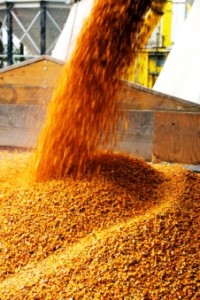 This week I take a look at the new ASBC method for doing sensory and flavor evaluation of malts for brewing beer. This new “hot steep” technique published last fall by the American Society of Brewing Chemists provides a standardized method to do a sensory (taste) analysis of malts and is a great way to get familiar with the individual flavors that come from various malts.
This week I take a look at the new ASBC method for doing sensory and flavor evaluation of malts for brewing beer. This new “hot steep” technique published last fall by the American Society of Brewing Chemists provides a standardized method to do a sensory (taste) analysis of malts and is a great way to get familiar with the individual flavors that come from various malts.
The basic technique involves making a “hot tea” with finely crushed malt and then filtering it with filter paper (or a coffee filter) to extract a hot tea you can sample for flavor. Since the process does take some time, it is best done for a few malts at a time and would also be a great group project for a homebrew club to brew and sample many malts.
The ASBC Hot Steep Malt Sensory Method
The technique below is adapted from the Breiss web site description here.
- Weigh a sample of 50 grams (1.75 oz) of base malt. If evaluating specialty malts, instead use 25 g (0.88 oz) of specialty malt blended with another 25 g (0.88 oz) of base (pale) malt. For dark roasted malts, use 7.5 g (0.25 oz) of roast malt with 42.5 g (1.5 oz) of base (pale) malt. Obviously you can double or triple the amount of malt and water if you need a larger sample for a group to evaluate.
- Mill the grains in a clean electric grinder for about 10 seconds. A coffee grinder works well for this as you want a coarse flour consistency – which is finer than you would typically use for brewing.
- Next heat 450 ml (1.9 cups or 0.95 pints) of water to 65 C (149 F) and combine it in with the crushed grain sample in an insulated thermos or growler and shake it for 20 seconds to mix the grain and water. Let the mixture stand for 15 minutes.
- While the mixture is steeping, place some filter paper (Alstrom 515) at the top of a clean beaker or glass. A coffee filter is a suitable substitute if you don’t have access to lab paper filters. Wet the paper with some deionized water.
- Swirl the thermos/growler to bring the particles back into solution and pour the mixture into the filter. Draw the first 100 ml (just under 1/2 cup) off the collected wort and pour it back into the thermos to collect any remaining grainsm then pour that also into the filter. Allow the filter to drain completely leaving your liquid sample.
- Let the sample cool, and do your sensory evaluation when it has reached room temperature, within four hours of filtering.
The actual sensory evaluation is done by sipping the resulting wort. Look for common malt flavors such as bready, malty, grainy, toasty, nutty, grainy, plums, raisins and of course the variety of coffee, roasted, burnt flavors that come from darker malts. As I mentioned you can get together with fellow brewers or your brew club and do a group-sampling of many malts to learn more about the flavors involved. Also some maltsters such as Briess have started publishing “spider charts” for their malts based on sensory analysis that can serve as a good guide of the flavors you might expect from a given grain.
Hopefully you enjoyed this week’s article on malt sensory testing. Thanks for joining me on the BeerSmith Home Brewing Blog. Be sure to sign up for my newsletter or my podcast (also on itunes…and youtube…and streaming radio station) for more great tips on homebrewing. Also check out the How to Brew Video series I shot with John Palmer if you want to learn more about all grain brewing.
Thanks for sharing this method. That method seems simple but I bet it’s not.
Brad,
Thank you for sharing this, I searched for it a lot and the ASBC is too hard to access for the normal folk. I reckon it will be of extreme use when polishing recipes and choosing raw materials, both for the homebrewer and the pros.
Cheers!